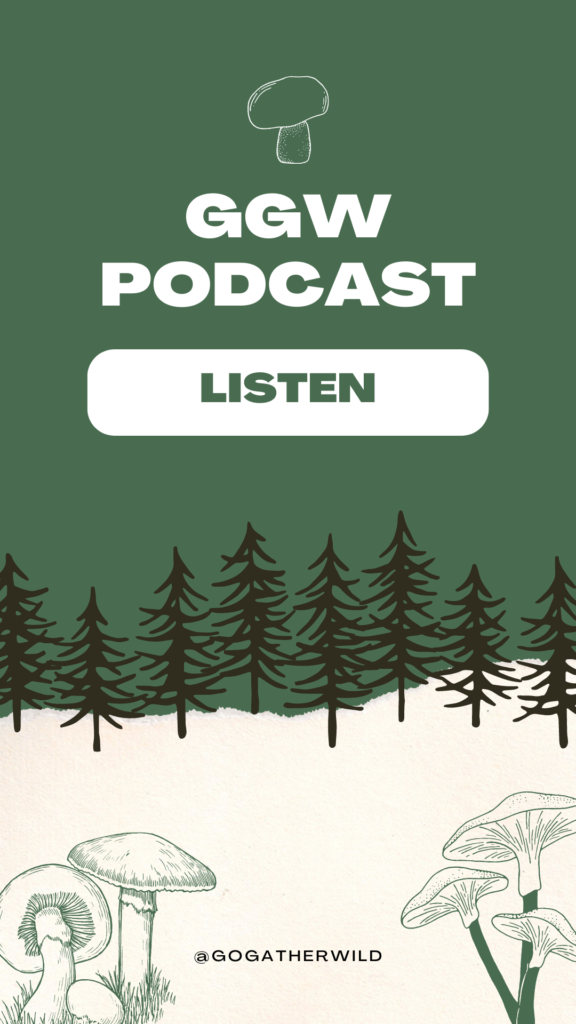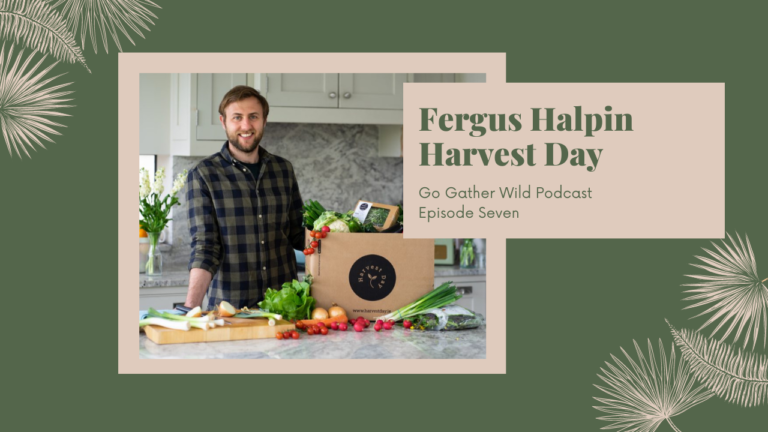This seaweed foraging guide will cover everything you need to know about seaweed. We’ll start by talking about seaweed in general, including what it is and how seaweeds are classified. Then we’ll talk about the different types of edible seaweeds out there and give a few recipes that use seaweed as an ingredient. Finally, we’ll go over some of the health benefits of eating seaweed and provide some information on how to dry it so you can store your harvest!
What really is Seaweed?
Most seaweed is a marine algae and not a plant. They are generally grouped together as seaweeds, but there are actually three main groups of seaweeds: brown seaweeds (kelp), red seaweeds, and green seaweeds.
Brown seaweed like kelp or Nori seaweed are found in cold seawaters, like those in the northern hemisphere. They can grow to nearly 300 feet long and four inches wide!
Green seaweeds or green algae live mostly in warm seawater areas of the world, such as southern Pacific or Caribbean waters. Their colours vary from yellow-green to dark greenish brown and they may have a branchy appearance.
Red seaweed species include dulse (reddish-purple) that is only found on North Atlantic shores or Porphyra norvegica which has vivid pink pigments for protection against sunburns and higher temperatures than other seaweeds.
Seaweed Health Benefits
Seaweed is one of the most nutritious and healthiest foods on the planet. It’s good food for people who have delicate stomachs or those of us that want to make healthier choices in our diet without sacrificing taste.
Here are some benefits from eating seaweed:
– It has high levels of protein
– One cup of seaweed contains as much vitamin C as one orange
– Seaweeds contain iodine which helps regulate hormones
– They’re often rich in calcium so they can help with osteoporosis prevention and give your bones strength to fight off infection (calcium deficiency contributes greatly to fungal infections).
The nutrients found in seaweed, such as omega fatty acids which are good for the heart, saponins which are used for reducing cholesterol levels and treating hypertension and carotenoids which help to protect the body from the effects of free radicals.
It’s also been found that seaweed can lower blood pressure by increasing nitric oxide production in the human vascular system.
Trying to eat healthier? Adding seaweed can offer a nutritional boost. You’ll be doing yourself (or someone else) a favour!
How to Forage Seaweed
When foraging seaweed, you’ll want to be knowledgeable about the types of seaweeds that grow in your region. For example, if you live near a coastline then it is likely that there will be many species of edible seaweed available for harvests such as dulse and sea lettuce.
If you are inland or on an ocean coast without access to shoreline plants, then exploring more freshwater sources may provide opportunities to find unfamiliar varieties like kelp.
The first step when collecting water plants is always making sure they are not poisonous! Seek guidance from someone who knows which ones can harm humans before collecting them yourself.
Preparing for edible plants requires gathering knowledge of the appropriate time to harvest.
When to collect Seaweed
The seaweed harvesting season is from October to June. To take full advantage of the season, seaweed should be harvested in the late spring or summer months.
Seaweeds can also be collected in winter, but it’s best to wait until after a storm has washed seaweed up onto shorelines and beaches where they grow naturally. Storms may even bring seaweed all the way into inland waterways like riverside estuaries.
Are all seaweeds edible?
For beginner foragers, seaweed is one of the safest edible plants to forage. Seaweeds are edible and you can eat most of the seaweed that is found on the shoreline, with a few exceptions. Certain types of algae are toxic so it’s important to be able to identify them if you don’t know what they are.
The types of edible seaweed that will grow in abundance at low tide lines or areas where freshwater meets saltwater include:
– Kombu – long strands used as an edible thickener in Japanese cuisine;
– Nori (laver) – sheets wrapped around sushi rolls
– Wakame – dried shredded flakes added into miso soup or salads
– Dulse – thin red strips sold as “sea vegetables”
– Carrageen – a type of edible seaweed that is used to make Jell-O
Commonly Eaten Seaweeds
Seaweeds are a great source of essential minerals. They’re rich in iron and an excellent means of getting your daily dose of iodine. The three most commonly eaten types are Nori, Kombu, Wakame.
Nori is eaten in the form of edible seaweed wrappers around sushi. It’s also used to wrap rice balls and is a popular addition to salads, soups and tofu dishes in Japanese cuisine. It can be used to make tasty crispy seaweed snacks as well.
Kombu seaweed can be eaten shaved into thin strips or cut up finely for cooking as it has a subtle taste that goes well with other foods. Kelp broth – made from simmering kombu in water – is commonly enjoyed by people who are recovering from an illness because it boosts their immune system.
Wakame doesn’t need much preparation before eating but both Nori and Kombu should be cooked thoroughly before consumption if they’re intended for use as edible food wraps.
Irish moss is another name for the commonly used carrageen. A lot of people are now using Irish moss to make a jelly like drink that is great for your gut.
The best seaweed or green algae comes from companies who practice sustainable seaweed farming so when buying nori sheets or any edible species around the world be sure to choose the right product.
Seaweed Eating Countries
Seaweed foraging is popular in Norway, Ireland, France, the UK, and the Hawaiian Islands.True, seaweeds are eaten all over Asia but the most popular consumption is in Eastern countries like Japan, China and Korea.
In many cultures, seaweed has been a major part of their diet since ancient times. The Japanese have used seaweed in cooking for centuries with fresh green laver being found at street markets where it was sold to passers-by by women wearing traditional happi coats (a heavy outer garment made from cotton).
In Europe, it seems that seaweed eating became less common during more recent history although there were still areas such as Wales and Brittany which retained some tradition due to the remoteness of these communities.
Seaweed in The UK
When it comes to edible seaweed, UK and Ireland food lovers have many options to choose from. There are a few edible seaweeds that can be found all over the UK and Ireland, but if you want to start your foraging adventure with an edible type of seaweed, try out these types:
Rockweed: this is a common variety of edible seaweed that can be eaten raw or cooked. It has the texture of spinach when it is young but becomes more leathery as it ages. The best time to eat edible rockweed foraged from the UK coastline would probably be during springtime – which is its prime season throughout most parts of Ireland and Scotland.
Kelp: This type of edible seaweed can also be enjoyed both raw or cooked, with one main difference being that you must collect them from coastal sites where they grow on rocks (as opposed to picking up clumps).
Dulse: another common edible seaweed that looks like red lettuce and has a salty flavour.
Sea Lettuce: although not quite as tasty as other seaweeds, sea lettuce is great in salads or eaten raw.
Sea Spaghetti: can be eaten raw and is a type of edible seaweed found around Ireland.
Sea Fennel: this edible seaweed looks similar to celery but has an aromatic taste with hints of liquorice. It’s often added into dishes like a bisque soup where its delicate flavour enhances the taste without overpowering other ingredients.
Carrageen or Irish Moss: This sea moss has a mild taste and is used around the world as a vegan alternative to gelatine, an immune booster and gut supplement.
UK Seaweed Experts
The UK seaweed experts that we know of are: Dr Susan Hopkins, University of Plymouth, who has studied seaweed for over 40 years, and her research has helped us understand how seaweed is affected by pollution. Professor Keith Hamer from Brighton Marine Biology Unit at the University of Sussex whose studies have focused on the world’s largest brown algae forests in British Columbia – though there are many more in Scotland or Wales!
There is a number of seaweed foraging experts in the UK who are doing research, writing books or teaching people how to forage.




